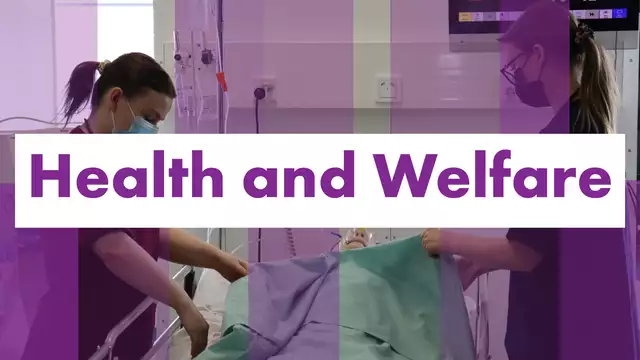
Challenges around healthy habits and lifestyle – can you teach old dogs new tricks?
Published: 03.06.2022 / Blog / Publication / Research
A Nordic conference in health behavior change was arranged in collaboration between Arcada University of Applied Sciences, Mälardalen University (MDU) and Folkhälsan in March 2022. The intention was to bring together health care professionals, teachers and researchers from Nordic countries interested in supporting lifestyle changes. The latest research and practical applications of behavior change approach in health care were presented and the importance of healthcare professionals’ competences in lifestyle change were highlighted.
George-Henrik Wrede, the CEO of Folkhälsan, opened the conference with a touching speech where he linked the importance of health and health promotion to the geopolitical situation in Europe. Professor Anne Söderlund (MDU) anchored the conference in the core question, why change in health behavior is more important than ever and Professor Pilvikki Absetz (Tampere University) highlighted public health problems and the role of behavioral interventions. Professor Martin Hagger (University of California, University of Jyväskylä) reflected on another very important question: why it is so difficult to change one’s behavior. The health care professionals´ skills needed to support patients in behavior change is another important aspect that was presented by Professor, emerita Eva Denison (MDU). You can assess on the website of Behavior Change Development Framework , whether your knowledge related to behavior change is up to date and what kind of training you might need!
What did the first day give us? There were many things we learned, but maybe the following could serve as a core message. We as healthcare professionals, need to focus much more to work with behavior change in our clinical practice as well as in research. This is not an easy task but so important in achieving sustainable results regarding the patients’ and clients’ health problems and our intervention studies. There are many tools to be used in the behavior change context and many tools for the patients to use. We hope that we have the strength to persist in our own behavior change to be able to support the change in others. You can use the Theory and Techniques Tool, presented to us by professor Hagger, to learn about the links between behavior change techniques and their mechanisms of action.
As reducing the sedentary behavior of our days is of utmost importance for our health (WHO 2020, Loh et al. 2020), we wanted to walk the talk in this conference and support behavior change in this domain. During her talk Anne Söderlund gave us part our daily dose of physical movement and during the rest of the day we had two inspiring workouts led by Siiri Vallas, who represented the company Cuckoo Workout, which provides a virtual tool for supporting breaks and workouts during a workday. The workouts helped to keep the energy levels of our minds and bodies high. You could feel the difference as often after a conference day one feels drained but this time we were full of energy to continue with a networking event after the lectures.
On the second conference day, the participants had the chance to practice six different techniques supporting behavior change in a workshop.
First, Caroline Eklund (MDU) showed the participants how to use self-monitoring and prompts/cues to support behavior change. This has been highlighted as one of the most effective techniques in supporting physical activity. Self-monitoring in this context means establishing a method for the person to monitor and record their behavior/ the outcome of their behavior and prompts and cues can be used to introduce or define environmental or social stimulus with the purpose of prompting or cueing the behavior. The prompt or cue would normally occur at the time or place of performance (Michie et al. 2009, 2013).
Marja Kinnunen (Finnish Musculoskeletal Association) introduced how to use modified motivational interviewing to enhance self-efficacy. She chose to use the Confidence ruler as an example of these strategies. The client or patient is asked to rate on a scale of 0 to 10 “How confident are you that you could do this if you decided to?”. After this, questions such as “Why are you at X, and not 0 (or another lower number)?” or “What would it take for you to go from (current number) to say (higher number)?” are asked. The importance of the technique is not in the first question but in the empowering discussion that follows (Miller W & Rollnick S. 2013).
Riikka Holopainen (JYU) presented validating communication as one method in supporting change. Validation means confirming, showing the other person that he/she is logical/understandable and communicating without judgements. It does not necessarily mean that you agree with the other person. To create an experience for the client/patient to be felt heard and understood, this might be crucial before starting to use any other behavior change techniques. (Fruzzetti & Worrall 2010, Linton 2015).
Johanna Fritz (MDU) focused on giving feedback to reinforce behavior, which is one of the most commonly used behavior change techniques especially to support physical activity. Feedback can be divided into knowledge of results where feedback is given on the outcomes of the behavior. Knowledge of performance means feedback on the behavior (Spring et al. 2020).
Mikaela Wiik (Folkhälsan) led the participants to self-reflect on their daily behavior to improve sleep. She introduced a 13-point checklist including topics such as regular habits, exercise, daylight in the morning and during the day and screenless evenings, to recognize one’s strengths and weaknesses and to find connections between different behaviors (THL 2020).
Last but not least, Anne Söderlund introduced self-regulation as a technique to support behavior change maintenance. Self-regulation means an ability to stand against temptations to stop the desired behavior and the ability to direct the attention, thoughts and behavior in line with goals and overcome obstacles. Social comparison and self-comparison are some much used self-regulation techniques. The client/patient is led to compare her/himself with others they know who struggle with the same behavior change challenge or to compare their current behavior with his/her previous behavior (Tougas et al. 2015).
These two days were the start of something we hope to continue in the future. Maybe as another conference or a short course in the topic of behavior change. We believe that healthcare professionals’ engagement in behavior change has come to stay and our competences in this topic will increase during the coming years. The future social and health care faces major challenges, among other things because the population is aging. Health-promoting initiatives and citizens’ responsibility for their own health and healthy choices in everyday life are crucial.
Riikka Holopainen, PT., PhD. Health Sciences, University of Jyväskylä.
Anne Söderlund, PT., PhD., Professor in Physiotherapy, Mälardalen University. Affiliated Professor Arcda UAS.
Camilla Wikström-Grotell, PT., PhD. Health Sciences, Vice dean, Arcada UAS. Affiliated researcher Mälardalen University.
References:
WHO. World Health Organisation., 2020. Guidelines on physical activity and sedentary behavior. Geneva: World Health Organization.
Loh, R., Stamatakis, E., Folkerts, D., 2020. Effects of Interrupting Prolonged Sitting with Physical Activity Breaks on Blood Glucose, Insulin and Triacylglycerol Measures: A Systematic Review and Meta-analysis. Sports Medicine, 50(2), pp.295-330.
Michie, S., Abraham, C., Whittington, C., McAteer, J., Gupta, S., 2009. Effective techniques in healthy eating and physical activity interventions: a meta-regression. Health Psychology, 28(6), pp. 690-701.
Michie, S., Richardson, M., Johnston, M., Abraham, C., Francis, J., Hardeman, W., Eccles, M.P., Cane, J.,Wood, CE., 2013. The Behavior Change Technique Taxonomy (v1) of 93 hierarchically clustered techniques: building an international consensus for the reporting of behavior change interventions, Annals of Behavioral Medicine, 46(1), pp.81-95.
Miller, W., Rollnick, S., 2013. Motivational Interviewing: Helping People Change. 3rd edition. The Guilford Press: New York.
Fruzzetti, A.E., Worrall, J.M.. 2010. Accurate expression and validating responses: A transactional model for understanding individual and relationship distress. Support processes in intimate relationships,11, pp.121-50.
Linton, S.J., 2015. Intricacies of good communication in the context of pain: does validation reinforce disclosure? PAIN. 156(2), pp.199-200.
Spring B., Champion, K.E., Acabchuk, R., Hennessy, E.A., 2021. Self-regulatory behaviour change techniques in interventions to promote healthy eating, physical activity, or weight loss: a meta-review. Health Psychology Review, 15(4), pp.508-539.
THL., 2020. Ohjeita hyvään uneen. Accessed 5.5.2022.
Tougas, M.E., Hayden, J.A., McGrath, P.J, Huguet, A., Rozario, S., 2015. A Systematic Review Exploring the Social Cognitive Theory of Self-Regulation as a Framework for Chronic Health Condition Interventions. PLoS One, 10 (8):e0134977.


